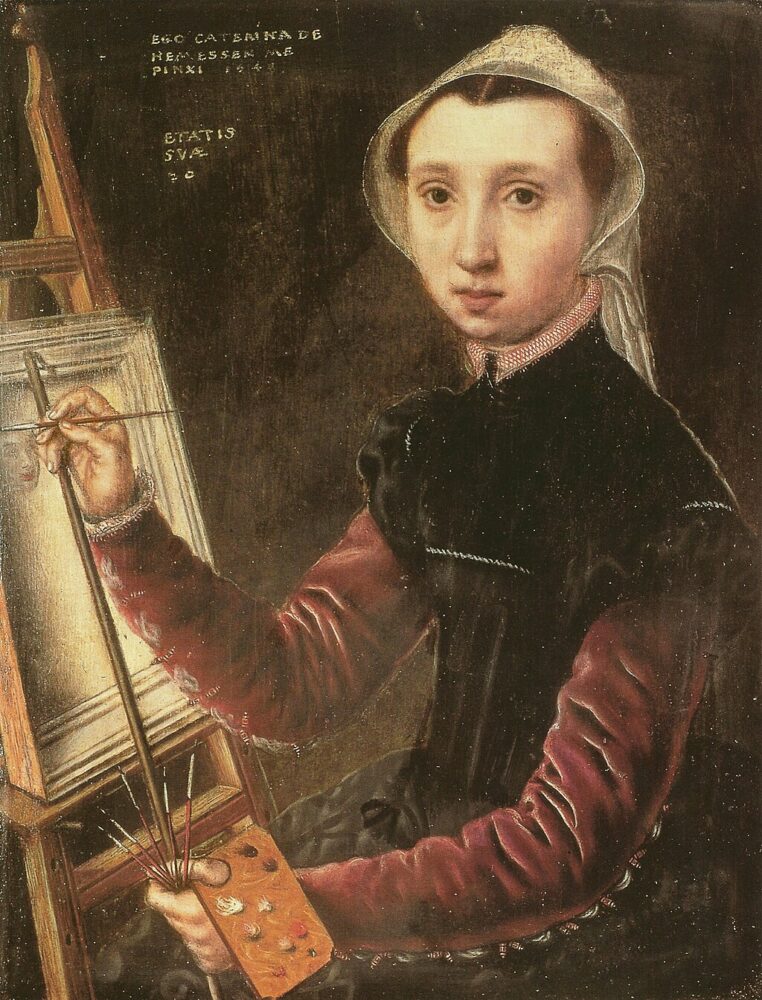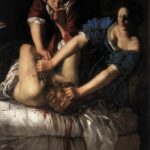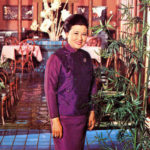
Editor’s Note: In honor of Women’s History Month, we’re sharing profiles of remarkable women in art we think you should know (if you don’t already).
Every now and then, you come across a woman from the past and think to yourself, “How has there not been a movie about her?!” Catharina van Hemessen is such a woman.
Born in Antwerp, Belgium, in 1528, van Hemessen was a painter. This might not sound like a particularly extraordinary accomplishment by today’s standards – but this was the Middle Ages, when most women did not have careers, work for themselves or do anything as lofty as “pursue their dreams.”
But Hemessen was lucky to have an artist in the family — her father, the well-known Renaissance painter Jan Sanders van Hemessen. Historians believe he is likely the one who trained her. That’s significant because hopeful artists back then needed to apprentice under older male artists to learn the craft, and gender norms made that far too complicated for most women.
It is perhaps only fitting, then, that what truly catapulted van Hemessen to new heights in her budding creative career was a lucky meeting with a rather prominent woman. According to the history books, van Hemessen was introduced to Maria of Austria, the Queen of Hungary and Bohemia and the governor of the Netherlands, likely through her father’s network. The royal would become Hemessen’s greatest patron.
In fact, Maria, an avid art collector, became enamored with Hemessen’s female portraits. So much so that when Maria moved to Spain in 1556, she invited Hemessen to join her at the Spanish court. To be hired as a court painter was kind of the ultimate artist gig in the Middle Ages – it meant a roof over your head, food on the table and a regular salary in exchange for your work.
Today, just 10 of van Hemessen’s works survive (that we know of) – housed in European museums and a few private collections. Eight are portraits, while two are religious paintings. Hemessen appears to have been interested in depicting the female form and gaze, evidenced by her numerous portraits “of a woman” or a “young lady.” Her most famous female portrait, however, is of herself.
Self-portraits were rare in the 16th century, but a self-portrait by an artist of themselves painting was not only pretty meta, but unheard of. In 1548, Hemessen painted herself at the easel and wrote on the front of the painting, “I Caterina van Hemessen have painted myself / 1548 / Her age 20.”
Many Renaissance paintings remain a mystery to us because they are not signed or dated. Here is Hemessen, not only signing and dating her works, but doing so on the front of the work. She did not hide her identity. She was not shy or cowering about being a woman in a man’s field. Her work is confident and bold – and well-worth remembering this Women’s History Month. ◼
Victoria Flexer, author of “A History of the World in Ten Dinners,” received her master’s degree in historical studies from The New School. She specializes in sharing history through food, art and culture.



